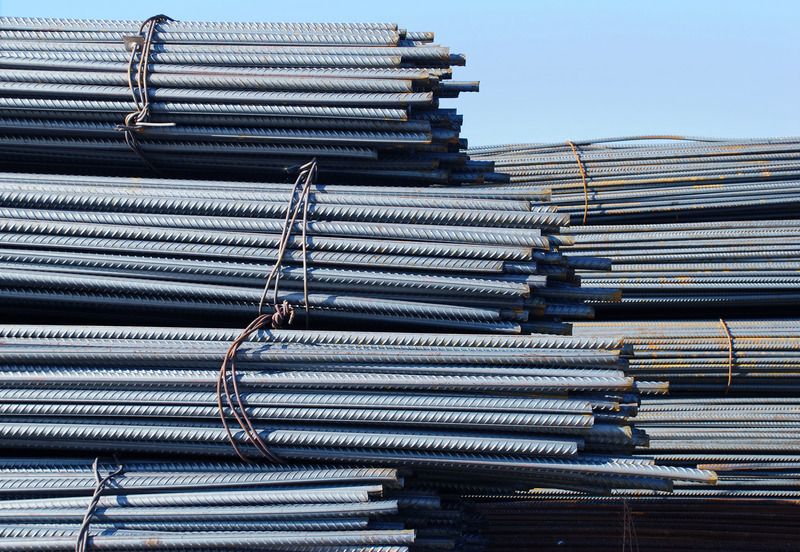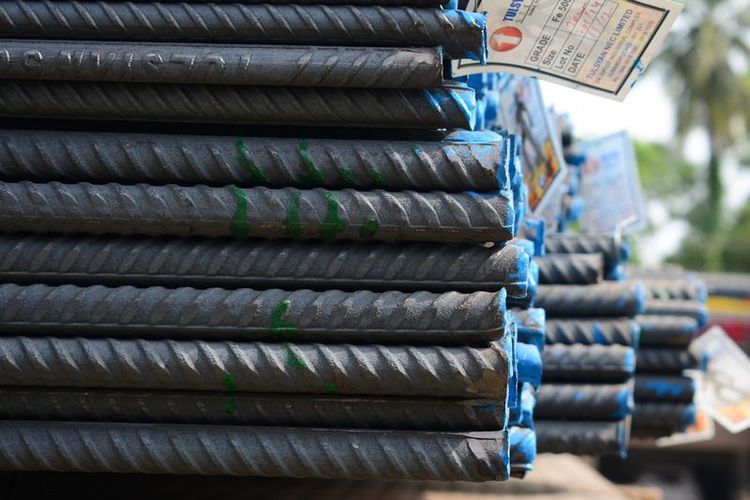Thermo-Mechanically Treated (TMT) bars and Mild Steel (MS) bars, both vital in construction, differ notably in composition, manufacturing, shape and properties. MS bars, primarily iron and low-carbon content, are cost-effective and suitable for low to medium stress projects, albeit susceptible to corrosion. In contrast, TMT steel, comprising a mix of elements and a specialised three-stage production process with a rib geometry, boasts higher tensile strength, superior ductility that bonds with concrete, and better corrosion resistance. With detailed specifications and reliable customer reviews, make informed decisions for TMT bars online purchase.
Mild Steel (MS) bars come in various types, including round, square, and flat bars, each suited to particular construction needs. Round bars are versatile and used in general construction and machine parts, while square bars find application in gates, grills, and structural components. Flat bars are employed as supports and base plates due to their flat surface. Additionally, deformed or ribbed bars enhance concrete bonding and are prevalent in reinforced structures. Tor steel, featuring twisted patterns, ensures better adherence to concrete. Derived from billets and ingots, these bars serve diverse structural purposes, offering different strengths and bonding characteristics essential for varied construction needs.
The difference between TMT bar and round MS bar


TMT bars
TMT steel bars are made from a specific steel alloy, primarily composed of iron with carbon content typically less than 0.30%.
Melting : Iron ore processed through blast furnace and basic oxygen furnace or scrap/DRI melted in induction/electric arc furnace to achieve desired composition
Casting : Molten steel is poured into moulds to form billets
Rolling : Hot billets are charged into rolling mill to produced bars of required sizes with rib pattern and passed through a rapid water quenching system to achieve desired mechanical properties
MS bars
MS bars are predominantly made from carbon steel with a relatively low amount of carbon, usually less than 0.25%.
Melting: iron ore and scrap metal are melted in a furnace, and alloying elements are added to achieve the desired composition.
Casting: the molten steel is poured into moulds to form billets or ingots.
Rolling: the billets are heated and passed through rolling mills to form bars of various sizes and shapes.
Properties and limitations of TMT and MS bar
Strength and flexibility characteristics: MS bars have moderate strength and flexibility, suitable for many construction purposes. However, they may not offer the same high tensile strength as TMT bars and might be less flexible in certain applications.
Susceptibility to corrosion: compared to TMT steel bars, MS bars are more susceptible to corrosion if not adequately protected. They often require additional coating or maintenance to prevent rusting.
Weldability and ductility: MS bars generally exhibit good weldability and ductility, allowing them to be easily welded and shaped during construction. However, compared to TMT steel bars, their weldability and ductility might be slightly lower.

Differences between TMT and MS bar
Composition:
TMT bars: TMT bars are made from a specific steel alloy with controlled amounts of carbon and other elements. They undergo a specialised manufacturing process involving controlled rapid water cooling after hot rolling.
MS bars: MS bars, on the other hand, are predominantly made from carbon steel with a relatively low amount of carbon and often contain other alloying elements in minor quantities.
Manufacturing process:
TMT bars: TMT steel goes through a sophisticated manufacturing process that includes hot rolling, quenching, and tempering. This process imparts specific properties to the bars, enhancing their strength, flexibility, and corrosion resistance.
MS bars: MS bars are manufactured through a simpler process involving melting, casting, and rolling, without the specialised thermo-mechanical treatment.
Strength and flexibility:
TMT bars: TMT bars exhibit higher tensile strength and enhanced flexibility due to the unique thermo-mechanical treatment. They are preferred in constructions requiring high-strength materials, such as earthquake-resistant structures.
MS bars: MS bars generally have moderate strength and flexibility suitable for many construction purposes but might not match the high tensile strength of TMT steel.
Corrosion resistance:
TMT bars: TMT bars have improved corrosion resistance due to the controlled cooling process during manufacturing, which creates a protective layer, reducing the risk of corrosion.
MS bars: MS bars are more susceptible to corrosion compared to TMT bars, often requiring additional protective coatings or maintenance to prevent rusting.
Weldability and ductility:
TMT bars: TMT steel possesses excellent weldability and ductility, allowing easy and strong connections during construction while maintaining structural integrity.
MS bars: MS bars also exhibit good weldability and ductility but might have slightly lower characteristics compared to TMT bars.
Applications and best use cases
TMT bars:
High-rise buildings and infrastructure: TMT bars are extensively used in high-rise buildings, bridges, flyovers, and other critical infrastructure where high tensile strength and flexibility are essential. They offer excellent seismic resistance, making them ideal for earthquake-prone regions.
Industrial structures: TMT bars are preferred for constructing industrial structures like factories, warehouses, and power plants due to their durability and ability to withstand heavy loads and harsh conditions.
Roads and bridges: they are suitable for constructing roads, highways, and bridges where high strength and resistance to corrosion are crucial, especially in areas prone to environmental degradation.
Residential construction: in modern residential constructions, TMT bars are commonly used for building foundations, columns, beams, and other load-bearing elements where enhanced strength and durability are required.
MS bars:
Low-rise buildings: in low-rise buildings where high tensile strength is not the primary concern, MS bars can be a cost-effective choice for constructing smaller residential or commercial buildings.
Non-critical structures: for non-critical elements of structures that do not require high strength, such as non-load-bearing walls, smaller slabs, and temporary structures, MS bars can be suitable due to their affordability.
General construction: MS bars find applications in general construction projects where cost considerations outweigh the need for superior strength and resistance to corrosion.
Small-scale projects: for smaller construction projects, diy projects, or small-scale renovations, MS bars might be more accessible and cost-efficient.
Choosing between TMT and MS bars involves considering factors like structural requirements, environmental conditions, budget constraints, and regulatory standards. TMT bars, with their superior strength, flexibility, and corrosion resistance, are typically favoured in critical infrastructure and high-stress applications. Conversely, MS bars serve well in less demanding projects where cost-effectiveness is a primary concern and where the need for high strength and corrosion resistance is not as crucial.
Buy online
Mild SteelStainless SteelStructural SteelTMTCementJSW One MSME
About usBlogsSitemapJSW One TMTPolicy
Terms & conditionsPrivacy policyReturn policyBanking partner


 +91 7208055523
+91 7208055523
 Help & support
Help & support
